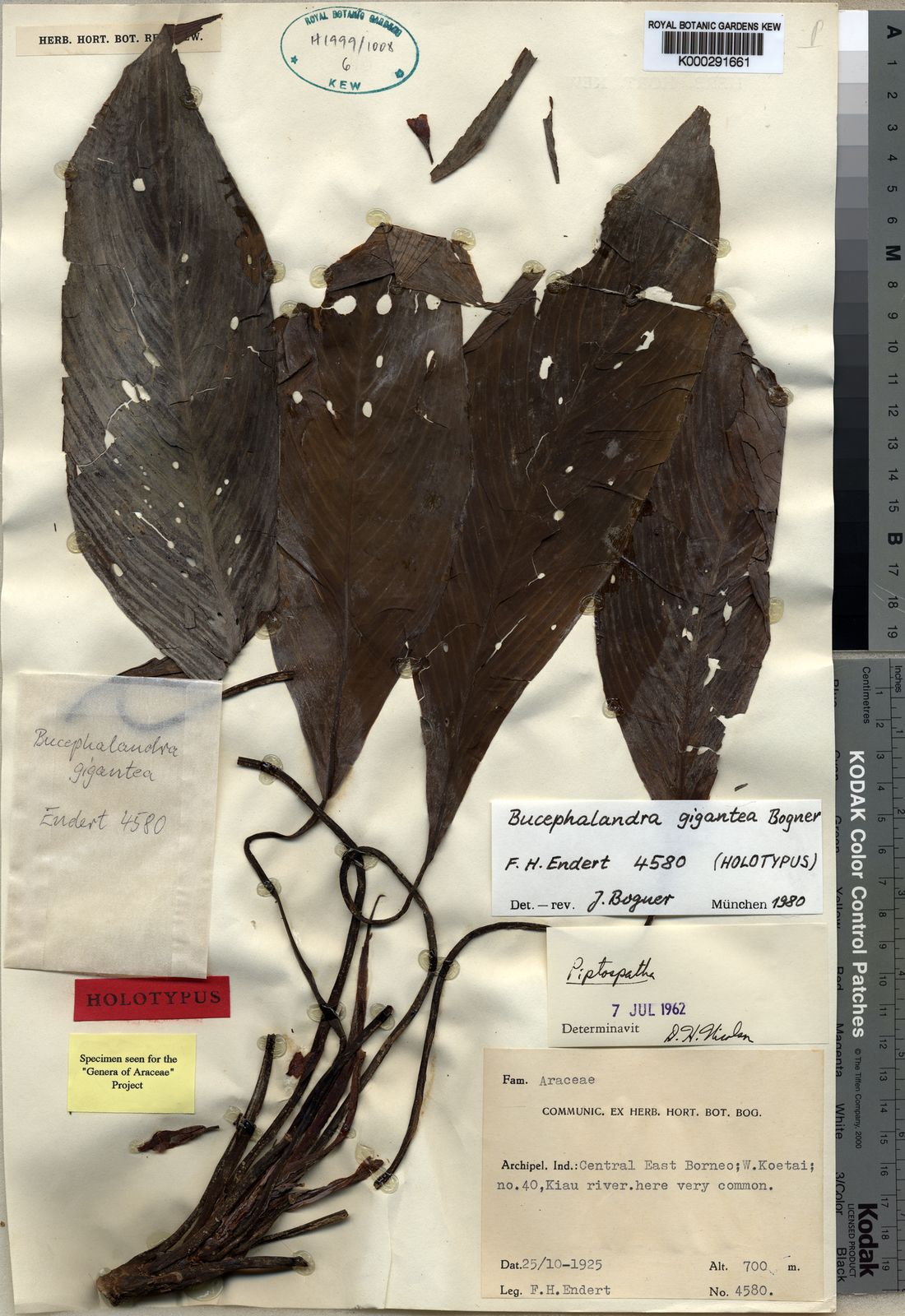CATE Araceae, 17 Dec 2011. araceae.e-monocot.org
-
Distribution
-
Malesia: endemic to Borneo (East Kalimantan); known only from the type.
So far known only from the type locality, where it is described as "very common here, forming the vegetation" (Endert in sched., translated from Dutch).Remarks - Bucephalandra gigantea is presently the largest described Bucephalandra species, remarkable for the size of the leaf blades. The Kew isotype has the most complete field data, and there it is noted "andere bijzonderheden" (other observations) "already a few specimens collected along the rivulets but much smaller there". Neither of the published descriptions (Bogner 1984; Bogner & Hay 2000) makes mention of any colours, although the label on the Kew isotype records "petioles reddish, leaf upper surface blotched/spotted reddish; - spathe pink; - fruit green" (translated from Dutch).
-
Ecology
-
Bucephalandra gigantea is rheophytic on rocks submerged in water and on small waterfalls, reported from c. 700 m above sea level. Endert (in sched.) reported B. gigantea as forming the dominant rheophytic vegetation.
-
General Description
-
Herb c. 40 cm tall. Stem with short internodes c. 5 mm long, ?erect, 4 (-?) cm long (incomplete), c. 1 cm diam. Leaves to 10 together; petiole 15-28 cm long, sheathing at the extreme base, the wings extended into a very narrowly triangular ligular portion 5-12 cm long drying dark brown; blade elliptic, 18-25 cm long × 6-7 cm wide, abaxially punctulate, the base cuneate, the apex acuminate and apiculate for 5 mm; midrib abaxially prominent, slightly prominent adaxially, with 16-20 close-spaced primary lateral veins on each side, alternating with interprimaries and diverging at c. 45°; between the primary and interprimary veins finer secondary veins and between them a third order of striate venation finer still; ultimate venation (cross veinlets) obscure. Inflorescences small relative to leaves, in small synflorescences produced in series of 2-3 each consisting of 2 inflorescences subtended by lanceolate cataphylls to 6 cm long; peduncle 6-12 cm long, slender. Spathe ovate, 2.5-3.5 cm long, apiculate for 4-10 mm, the lower c. 1 cm persistent, the upper part falling (?caducous). Spadix 1.5-2 cm long; female zone 3-5 mm long, 1.8-3 mm diam.; ovary depressed-globular, 0.6-0.7 mm diam.; stigma sessile, disc-like, 0.3-0.4 mm diam.; interpistillar staminodes apparently absent (material poor); sterile interstice composed of 1-2 irregular whorls of more or less elliptic scale-like staminodes 1-1.5 mm long; male zone 4-5 mm long, 2-3 mm diam., cylindric; filaments of stamens more or less truncate, hidden from view by the prominent, rather elongate horned thecae 1.3-1.8 mm long; thecae together on the lower (with respect to spadix) side of the stamen, upward-facing (with respect to spadix); appendix subcylindric, 6-10 mm long, 2-3 mm diam., apically obtuse; staminodes of appendix irregular ellipsoid to roundish in surface view, truncate, 0.5-0.6 mm diam., apically papillose. Fruiting spathe funnel-shaped, 0.8-1 cm diam.; berries depressed globular, 1.5-2 mm diam., several-seeded; seed elongate, 1.1-1.5 mm long, c. 0.4 mm diam., with a curved micropylar appendage; testa slightly ribbed.
-
Habitat
-
Unknown; type collected at 700 m alt.

